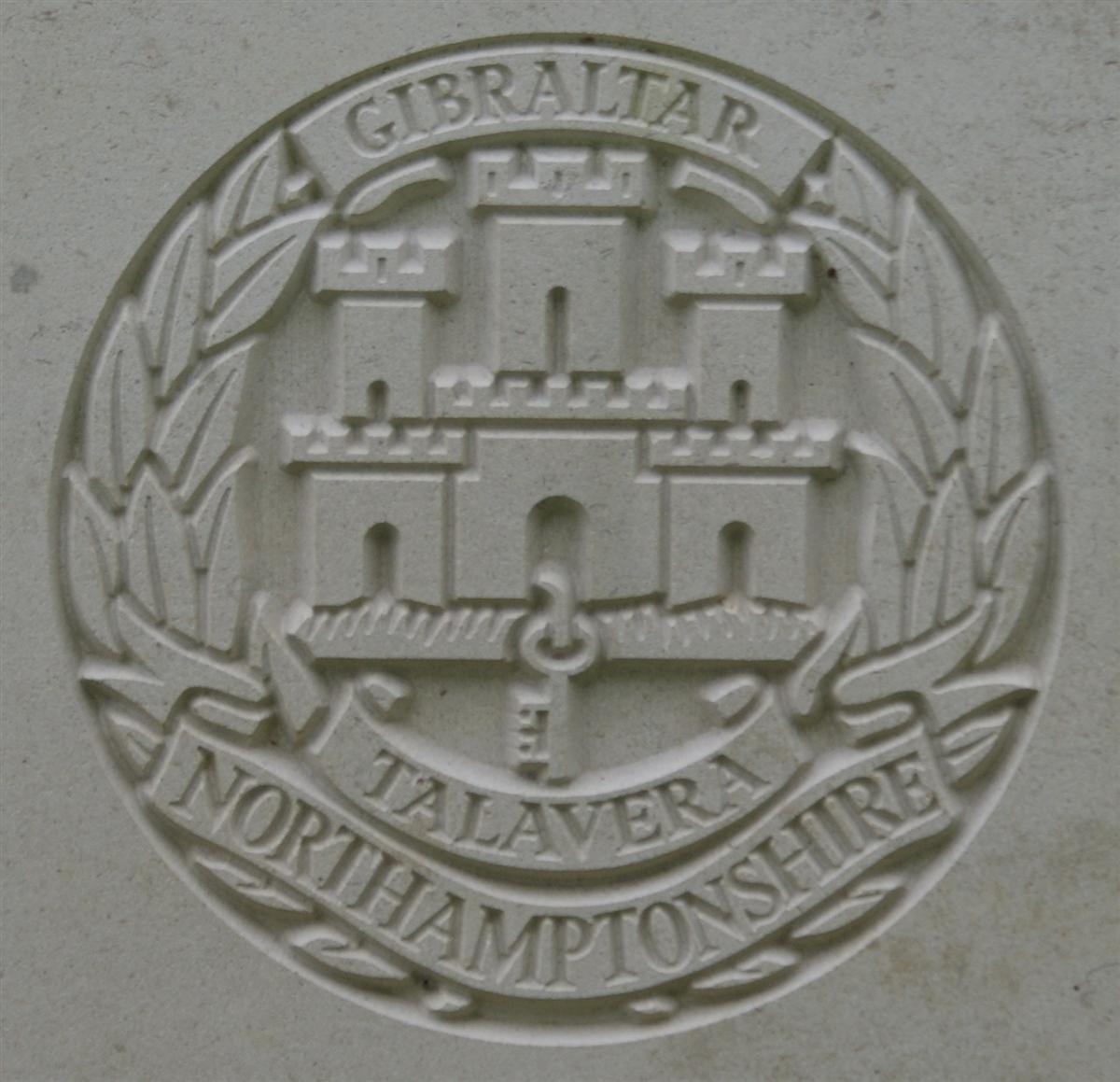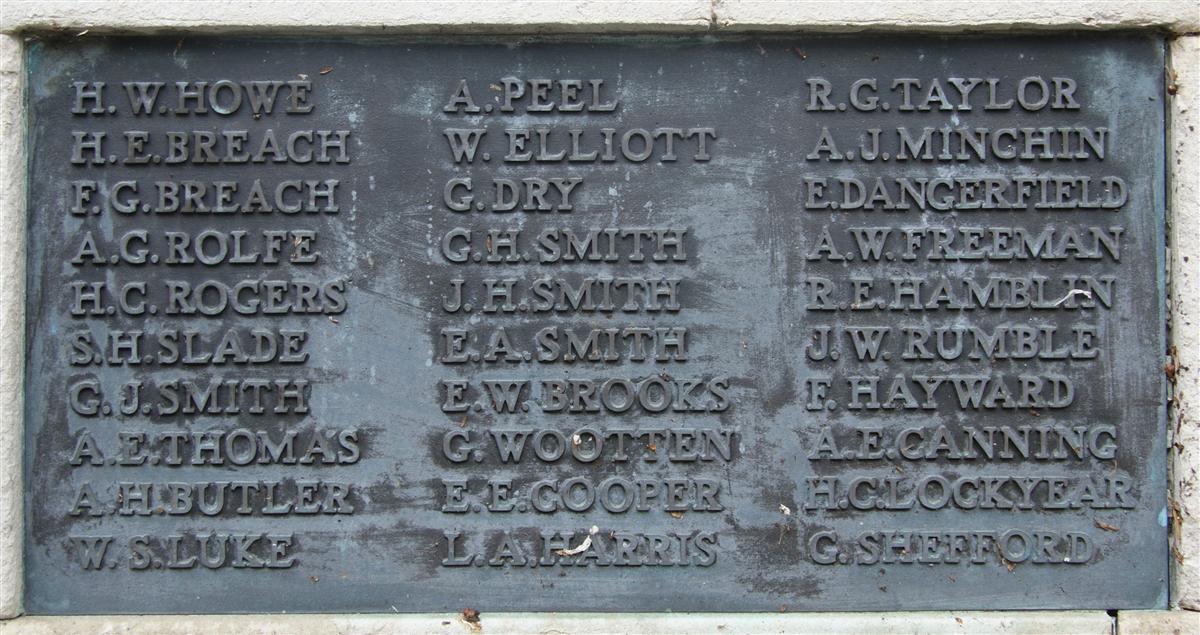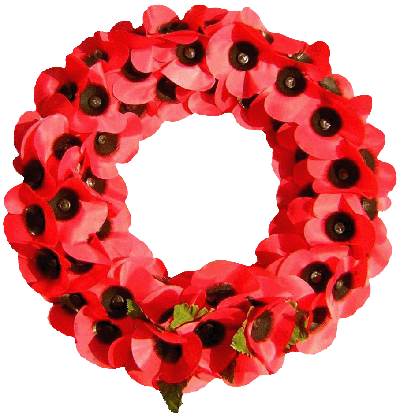Ernest Walter Brooks
Private 41984 Ernest Walter Brooks, 7th Battalion Northamptonshire Regiment
Ernest was born in Newbury in 1899, the son of Charles Brooks and his wife Ellen (Sarah Ellen Smith). Charles was a bricklayer's labourer - at a time when Newbury was expanding rapidly he should have found plenty of work. It was a building boom that benefitted the Brooks family, in 1891 they were living in a small cottage in King's Road (now King's Road West), in 1911 they were in Essex Place, an older and even smaller cottage behind 131 Bartholomew Street (now buried under the Kennet Centre). However, by 1916 they were in much more modern accommodation at 12 Adey's Buildings (now Adey's Close) in an area that was covered by workers' terraced cottages in the late C19th, early C20th.
The 1911 census return for the family includes three children who had left home, Herbert Charles, then aged 21 was working as a general labourer in Surrey, Sidney James (19) was in the Royal Navy and Mabel (16) was working as a kitchen maid in Salisbury. Ernest (13) and Winifred (7) were still at home. This census asked for additional information about children, how many were born and how many survived. In the case of the Brooks family this showed the all too common family tragedy of three children dying in childhood.
When war broke out in 1914 Ernest was only fifteen years old, too young to enlist. By the time of his eighteenth birthday he was working as an errand boy (a typical teenage occupation in a town like Newbury). Conscription had been introduced in 1916 and call-up papers were an eighteenth birthday gift from the War Office. Ernest was attested on 18 May 1917 (aged 18 years 1 month) and posted to the Training Reserve (by this date the army was no longer recruiting men directly into infantry regiments, basic training was run by the Training Reserve, following which men would be sent to whichever regiment/battalion was in need at the time). Ernest was posted to the Essex Regiment (regimental no 46800) on 7 December 1917 for further training in the UK. At this time men would not be sent to France before they were nineteen; Ernest was posted to the Front a couple of months after his birthday, arriving on 16 July 1918 (at a time when the BEF in France were so desperate for reinforcements that the age limit was actually lowered to 18½). He was posted to the 10th Battalion of the Essex Regiment, but two days later, on 18 July he was transferred to the 7th Battalion of the Northamptonshire Regiment; he joined up with his new battalion at the front on 22 July.

The regimental badge of the Northamptonshire Regiment, as used on CWGC headstones. |
On 8 August the Allied offensive began with the Battle of Amiens. By this time the Allies had learnt from their many mistakes of the past; using better infantry tactics, more and better tanks and artillery plus close air support they hit a demoralised German army hard and began what had seemed impossible and advance into Germany itself. The fighting was still fierce and casualties high, but the direction of travel was one way towards Germany.
Ernest spent a couple of weeks in hospital from 23 August to 7 September, with, according to his record, a leg problem – reported as ‘poisoned fingers’ in the local paper (below). However, he stayed on duty after he was wounded on 8 October.
On 4 November B and D Companies of the 7th Northamptonshire Battalion were detailed to provide support to an attack by the 9th Battalion Royal Sussex Regiment west of Sepmeries. A and C Companies were to follow up in case of need. D Company took casualties from the enemy’s response to the initial allied artillery barrage. By midday the situation had become static, so flanking attacks by the 7th Northamptonshire and the 13th Middlesex Battalions were made and the territory gained was consolidated. A measure of the altered circumstances of the fighting at this date was the involvement of French civilians in the villages they were fighting through, Wargnies le Petit and Wargnies le Grand.
At some point in this day Ernest was killed in action, perhaps in the shelling of D Company, perhaps in the subsequent fighting. For another week his companions fought on until they heard news of the Armistice as they were marching back to rest billets having been relieved from frontline duty.
Ernest was buried in an extension to the village cemetery at Villers-Pol in grave B.5.
The news reached the family later in November are was reported in the local paper:
Newbury Weekly News, 5 December 1918 – Local War Notes
Mr and Mrs C Brooks, of 12, Adey’s-buildings, Stroud Green, contributed three sons to the Great War, and have lost two, while one has been wounded four times. Sidney James was wrecked on the “Audacious” and was transferred to “Queen Elizabeth,” thence to the “Racehourse,” from which he lost his life in the Dover Straits, on December 9th, 1915. Ernest Walter, a private in the 7th Northamptons, who joined in April 1917, had been in France six months, is now reported killed. Herbert Charles was wounded four times.

Ernest's name on Newbury War Memorial (lower centre) |
His brother Sidney’s story is told here.
Herbert served with the Royal Berkshire Regiment; his wounds were reported in the local paper:
Newbury Weekly News, 20 September 1917 – Local War Notes
Pte H C Brooks, Machine Gun Corps, son of Mr and Mrs Brooks of Adey’s-buildings, Stroud Green, has been gassed and buried, but fortunately rescued. This is the third time buried, and twice wounded. Another son, Pte Ernest Brooks is suffering from poisoned fingers.
Newbury Weekly News, 9 November 1918 – Local War Notes
Pte Herbert Charles Brooks, of the Royal Berks, is again reported wounded. Thirteen months ago he was disabled for some months by wounds, and had only returned to duty about seven weeks. The parents, Mr and Mrs Brooks, of Adey’s-buildings, lost a son in the Royal Navy.
While he was recuperating from his wounds Herbert married Ellen Beasley in Newbury in 1918, he lived a long life, dying in Newbury Hospital on 17 November 1967 aged 78.

Find a memorial :
| Died this day: | |
| 14 October 1915 | |
| D Dyer | |
| Thatcham |

Like this site? Show your appreciation through a donation to a great charity.